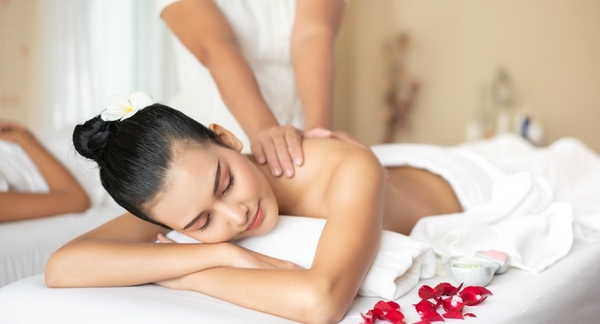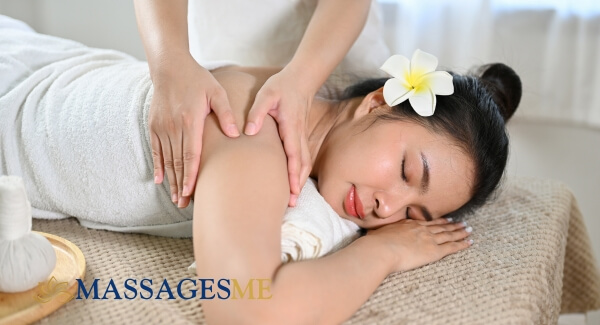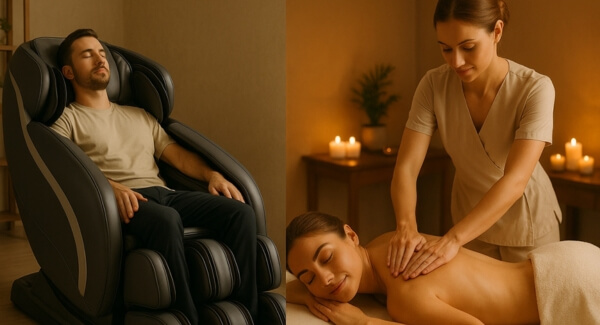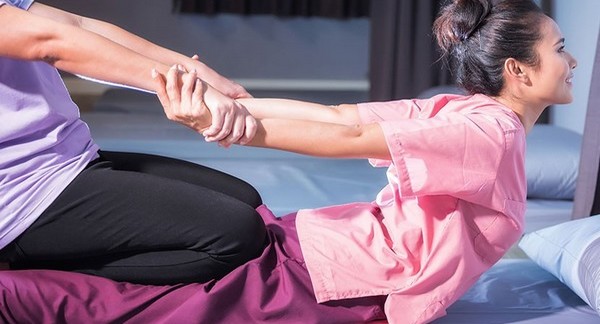The Origins of Thai Massage: A Deep Dive into its History and Philosophy
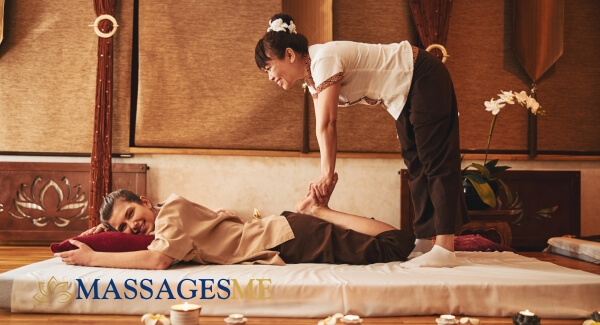
Thai massage, known in its homeland as Nuad Thai or Nuad Boran (ancient massage), stands as one of the world's most distinctive healing traditions. Unlike the oil-based, table-top massages common in Western spa culture, Thai massage is a fully clothed, floor-based practice that combines acupressure, assisted yoga postures, and rhythmic compression. Yet its uniqueness extends far beyond technique. With roots reaching back over two millennia, Thai massage embodies a rich tapestry of cultural exchange, spiritual devotion, and therapeutic wisdom that has been carefully preserved and adapted through generations.
Understanding the origins of Thai massage requires more than a simple historical timeline. It demands an appreciation of the philosophical foundations that transformed a collection of healing techniques into a complete system of bodywork, one that addresses not merely physical ailments but the interconnected nature of body, mind, and spirit. This article explores the ancient beginnings, cultural influences, temple traditions, and enduring philosophy that continue to shape authentic Thai massage practice today.
Ancient Roots: The Legend of Jivaka Kumar Bhaccha
The traditional narrative of Thai massage begins with a remarkable figure from the Buddha's era, some 2,500 years ago. Jivaka Kumar Bhaccha, known in Thai as Shivago Komarpaj, is revered as the founder and spiritual father of Thai medicine. According to Buddhist texts, Jivaka was an accomplished physician from northern India who served as the personal doctor to the Buddha and his monastic community, the Sangha.
Historical records describe Jivaka as an exceptionally skilled healer whose knowledge encompassed herbal medicine, manual therapy, and surgical procedures. His reputation for compassionate care and medical expertise earned him a place of honour that persists to this day. Before every traditional Thai massage session, practitioners recite the Wai Khru prayer. This ritual invocation pays homage to Jivaka and requests his guidance in channelling healing energy through their hands.
This devotional practice serves a purpose beyond mere tradition. It establishes the treatment as a sacred act, reminding therapists that they are not simply applying mechanical techniques but serving as conduits for healing rooted in compassion, or metta (loving-kindness). The invocation creates a meditative state in the practitioner, fostering the mindfulness and presence essential to authentic Thai massage.
Whilst Jivaka's direct authorship of specific Thai massage techniques remains historically unverifiable, his symbolic importance is undeniable. He represents the integration of medical knowledge with spiritual practice, a cornerstone of Thai healing philosophy that distinguishes it from purely mechanical approaches to bodywork.
The Confluence of Healing Traditions
Thai massage did not emerge in isolation. Its development reflects centuries of cultural exchange along ancient trade routes that connected India, China, Tibet, and Southeast Asia. As Buddhist missionaries, traders, and healers travelled these routes, they carried with them diverse medical traditions that would eventually synthesise into the distinctive practice we recognise today.
Ayurvedic influence from India contributed foundational concepts about the body's energetic systems and the importance of balance amongst elemental forces. Ayurveda's understanding of prana (life force) and its movement through the body found parallels in Thai concepts of lom (wind or vital energy) flowing through Sen lines.
Traditional Chinese Medicine offered its sophisticated meridian theory and the principles of yin and yang. The Chinese understanding of energy channels and acupressure points informed the development of Thai massage's pressure-based techniques. The concept of clearing blockages to restore proper energy flow became central to Thai therapeutic philosophy.
Indigenous Thai knowledge of local herbs, healing rituals, and manual therapies provided the cultural context that allowed these imported ideas to take root and flourish. Thai healers adapted foreign concepts to local needs, climate, and cultural practices, creating a uniquely Thai synthesis.
This blending was not merely eclectic borrowing but a thoughtful integration that created something entirely new. Thai massage evolved into a holistic system that addresses multiple dimensions of health simultaneously: physical, energetic, emotional, and spiritual. The resulting practice reflected both the universality of healing principles and the particular genius of Thai culture in harmonising diverse influences into a coherent whole.
The Temple Tradition: Monasteries as Centres of Healing
For much of its history, Thai massage existed primarily within Buddhist temple walls. Monasteries served as the cultural and intellectual centres of Thai society, and healing arts were considered inseparable from spiritual practice. Monks learnt massage techniques alongside meditation, scripture study, and herbal medicine as part of their service to the community.
This monastic context profoundly shaped the character of Thai massage. The practice was never purely medical; it was an expression of Buddhist principles, particularly metta and karuna (compassion). Monks offered massage freely to villagers as an act of merit-making and spiritual cultivation. The treatment space was considered sacred, and both giver and receiver approached the session with mindfulness and respect.
The integration of massage into temple life also ensured its preservation. Whilst much traditional knowledge in pre-modern societies was transmitted orally and vulnerable to loss, the institutional structure of monasteries provided stability and continuity. Senior monks taught junior monks, creating an unbroken lineage of knowledge transmission across generations.
Wat Pho: The Temple of the Reclining Buddha
No discussion of Thai massage history is complete without acknowledging Wat Pho in Bangkok, formally known as Wat Phra Chetuphon. Established in the 16th century and extensively renovated during the reign of King Rama I in 1788, Wat Pho became the preeminent centre for traditional Thai medicine and massage.
King Rama III (1824-1851) undertook an ambitious project to preserve Thailand's medical knowledge for posterity. He commissioned scholars to compile information from various sources (ancient texts, practised masters, and oral traditions) and had this knowledge inscribed on stone tablets throughout the temple grounds. These inscriptions included diagrams of pressure points, Sen lines, anatomical illustrations, and detailed explanations of therapeutic techniques.
Sixty stone plaques depicting human figures in various postures still adorn the temple courtyards. These figures show the locations of acupressure points and the pathways of the major Sen lines. Additional inscriptions detail herbal remedies, diagnostic methods, and treatment protocols. This remarkable archive transformed Wat Pho into a living library of traditional Thai medicine.
In 1955, Wat Pho established the first formal school for traditional Thai massage, ensuring that this ancient knowledge would continue to be taught systematically in an era of rapid modernisation. Today, the Wat Pho Thai Traditional Medical and Massage School remains one of the most respected institutions for learning authentic Thai massage. Practitioners who complete training there receive certification recognised throughout Thailand and internationally.
The temple continues to offer traditional massage services to visitors, maintaining the centuries-old practice of providing healing within a sacred space. For many practitioners worldwide, training at Wat Pho represents a pilgrimage, an opportunity to connect directly with the source tradition and receive teachings in the place where so much knowledge has been preserved.
The Philosophical Foundation: Sen Lines and Vital Energy
The theoretical framework underlying Thai massage centres on the concept of Sen lines, a network of energy channels through which lom (vital wind or life force) circulates throughout the body. Whilst the exact origins of Sen theory remain unclear, it reflects the synthesis of Indian and Chinese energy concepts adapted to Thai medical understanding.
Traditional Thai medicine recognises 72,000 Sen lines crisscrossing the body, though in practical application, ten primary lines receive the most attention. These major Sen channels include:
- Sen Sumana: Running along the centreline of the body, associated with the respiratory and digestive systems
- Sen Ittha and Sen Pingkhala: Flanking the centreline, corresponding to parasympathetic and sympathetic nervous systems
- Sen Kalathari: Connected to emotional processing and mental health
- Sen Sahatsarangsi and Sen Thawari: Associated with leg function and knee problems
- Sen Lawusang and Sen Ulangka: Related to ear, hearing, and balance
- Sen Nanthakrawat and Sen Khitchanna: Connected to digestive and urogenital systems
According to Thai medical theory, when lom flows freely through these channels, the body experiences health and vitality. Blockages or imbalances in the Sen lines manifest as pain, stiffness, illness, or emotional disturbance. Thai massage aims to restore proper flow by applying pressure along these pathways, using thumbs, palms, elbows, knees, and feet to release obstructions and re-establish energetic harmony.
This concept should not be understood as purely mystical. From a modern physiological perspective, work along Sen lines corresponds to stimulation of muscles, fascia, nerves, and circulatory systems. The pressure and stretching techniques improve blood flow, release muscular tension, stimulate lymphatic drainage, and trigger nervous system responses that promote relaxation and healing.
Yet reducing Sen theory to mere physiology misses something essential. The traditional understanding emphasises the subtle, energetic dimension of healing, the idea that our well-being depends on forces not entirely captured by mechanistic models. This holistic perspective, whether expressed in terms of energy channels or integrated mind-body function, remains central to authentic Thai massage practice.
Metta: The Heart of Healing
Beyond anatomical knowledge and technical skill, authentic Thai massage requires cultivation of metta, a Pali term often translated as loving-kindness, compassion, or unconditional goodwill. This Buddhist virtue represents the emotional and spiritual foundation of the practice.
Metta is not merely a pleasant sentiment but an active state of consciousness. Before and during a session, practitioners engage in meditation practices designed to generate feelings of warmth, acceptance, and genuine care for the recipient's well-being. This mental state transforms the therapist's touch from mechanical manipulation into healing presence.
The emphasis on metta reflects the Buddhist understanding that consciousness affects matter, that intention shapes outcomes, and that healing involves more than just physical intervention. When a practitioner approaches the work with genuine compassion and mindfulness, the recipient senses this quality and responds accordingly. The nervous system relaxes more deeply, muscles release more readily, and the overall therapeutic effect is enhanced.
This principle also protects the practitioner. Thai massage is physically demanding work that can lead to burnout if approached purely as mechanical labour. By maintaining awareness of metta, therapists transform effort into practice, making each session an opportunity for spiritual cultivation rather than merely physical exertion.
The traditional training process reflects this emphasis. Students do not simply learn techniques; they are guided in developing the meditative awareness and compassionate intention that make those techniques truly therapeutic. Senior teachers evaluate students not only on technical proficiency but on their capacity to maintain present-moment awareness and embody metta throughout a session.
From Temples to the World: Modern Evolution
For centuries, Thai massage remained largely confined to Thailand, practised primarily within temple settings or by traditional healers working in local communities. This began to change in the latter half of the 20th century as Thailand opened to international tourism and Thai massage gained recognition beyond its cultural homeland.
The 1960s and 1970s saw the first wave of Western students travelling to Thailand to study traditional healing arts. These early adopters reintroduced Thai massage techniques to Europe, North America, and Australia, adapting them to suit different cultural contexts and client expectations. Schools and training programmes emerged in major cities worldwide, creating a global community of practitioners.
This internationalisation brought both opportunities and challenges. On the positive side, millions of people gained access to a profoundly effective healing modality. Thai massage has found applications in sports medicine, physical therapy, pain management, and stress reduction. Research studies began documenting its therapeutic benefits, lending scientific credibility to traditional claims.
However, globalisation also risks dilution and commercialisation. As demand grew, training programmes sometimes shortened traditional apprenticeships into weekend courses. The spiritual dimension risked being stripped away in favour of purely mechanical technique. "Thai massage" began appearing on spa menus alongside services that bore little resemblance to authentic practice.
Recognising these challenges, the Thai government and traditional institutions took steps to protect and preserve authentic Thai massage. In 2019, UNESCO inscribed Nuad Thai on its Representative List of the Intangible Cultural Heritage of Humanity, formally recognising its cultural significance and supporting efforts to maintain traditional knowledge and transmission methods.
Thailand has also established certification standards and encouraged international schools to maintain connections with source institutions like Wat Pho. Many serious practitioners make regular pilgrimages to Thailand for advanced training and to reconnect with the tradition's roots.
Today, Thai massage exists in multiple forms: from temple-based practice unchanged for centuries, to clinical applications in hospitals and rehabilitation centres, to spa treatments adapted for tourist expectations. The challenge for contemporary practitioners is to honour the tradition whilst making it accessible and relevant to modern contexts, to preserve the philosophical foundation whilst allowing appropriate evolution.
The Enduring Relevance of Ancient Wisdom
In our contemporary world of technological medicine and evidence-based protocols, what relevance do ancient healing traditions maintain? The persistence and growing popularity of Thai massage suggest that it offers something not readily available through conventional approaches.
Perhaps most significantly, Thai massage embodies a holistic vision of health that resonates with increasing numbers of people dissatisfied with purely symptom-focused medicine. The understanding that physical complaints often reflect emotional, energetic, or spiritual imbalances aligns with emerging research on the mind-body connection, the role of stress in disease, and the importance of treating the whole person rather than isolated symptoms.
The emphasis on mindfulness and presence offers particular value in our distracted, hyperconnected age. Both receiving and practising Thai massage require sustained attention to the present moment, an antidote to the fragmented awareness that characterises much of modern life. The meditative quality of a session provides respite from mental chatter, creating space for deeper self-awareness.
The principle of metta speaks to a widespread hunger for authentic human connection. In therapeutic contexts increasingly dominated by brief, efficiency-driven interactions, Thai massage offers an encounter characterised by patience, attentiveness, and genuine care. This quality of presence may be as therapeutically significant as any specific technique.
For those seeking to find qualified Thai massage therapists in the UK, understanding this historical and philosophical foundation helps identify practitioners who honour the tradition's depth rather than simply borrowing its techniques. Authentic Thai massage is not merely a collection of stretches and pressure points but a complete approach to healing rooted in centuries of refinement and spiritual wisdom.
Conclusion: Tradition as Living Practice
The origins of Thai massage reveal a practice far richer than its surface appearance might suggest. What appears to be simply bodywork is, in fact, the physical manifestation of profound philosophical principles regarding the nature of health, the interconnection of body and mind, the flow of vital energy, and the transformative power of compassionate presence.
Understanding this history and philosophy enriches both the giving and receiving of Thai massage. For practitioners, it provides context that elevates technical skill into a genuine healing art. For recipients, it opens the possibility of experiencing massage not as passive relaxation but as active participation in a tradition that has nurtured human well-being for over two millennia.
The story of Thai massage demonstrates how healing knowledge can be preserved across centuries whilst remaining vital and relevant. From Jivaka's legendary compassion to the monastic preservers at Wat Pho, from the synthesis of diverse medical traditions to the modern global practice, Thai massage has continually adapted to changing circumstances whilst maintaining its essential character.
As Thai massage continues to evolve in the 21st century, the challenge remains to honour these deep roots whilst allowing appropriate growth. The ancient wisdom of Sen lines, the devotional practice of metta, the meditative quality of mindful touch, these elements constitute the soul of Thai massage. They are what transform a series of physical manipulations into an encounter with healing in its fullest sense: the restoration of harmony between body, mind, and spirit.
For those who approach it with respect and curiosity, Thai massage offers not merely relief from physical discomfort but connection to an ancient lineage of healing wisdom, a living bridge between past and present, tradition and innovation, technique and spirit.
Search Massage Therapists Near You.
More From Our Blog
Latest Blogs
Post-Thai Massage Care: Tips for Maximizing the Benefits After Your Session
Thai Massage for Beginners: Answering Common Questions for Your First Session
Choosing the Right Thai Massage Therapist: What to Look for in a Qualified Professional
Post-Thai Massage Care: Tips for Maximising the Benefits After Your Session
Preparing for Your Thai Massage: Tips on What to Wear and How to Get Ready
How to Talk to Your Therapist for the Best Thai Massage Experience
What to Expect During a Traditional Thai Massage Session
A Guide to How Thai Massage Techniques Can Correct Postural Issues
How Thai Massage Can Help with Back Pain, Headaches, and Sciatica
The Mental and Emotional Benefits of a Thai Massage Session
View All Blogs
Advertise with Massages Me and Grow Your Business!
We are the leading massage platform for massage therapists in London and across the UK covering all of England, Scotland, Wales and Northern Ireland. Our aim is to promote individual therapists and venues in the UK, and help professional and casual body workers providing therapeutic and relaxing massages to expand their businesses and build desirable client base.
We provide a friendly and reliable online advertising platform for qualified Masseuses, students, and salons to connect with potential clients looking for relaxing and therapeutic massages - onsite and offsite mobile services across the UK.
Are you looking to meet more customers? Get your profile listed and start getting bookings today!
